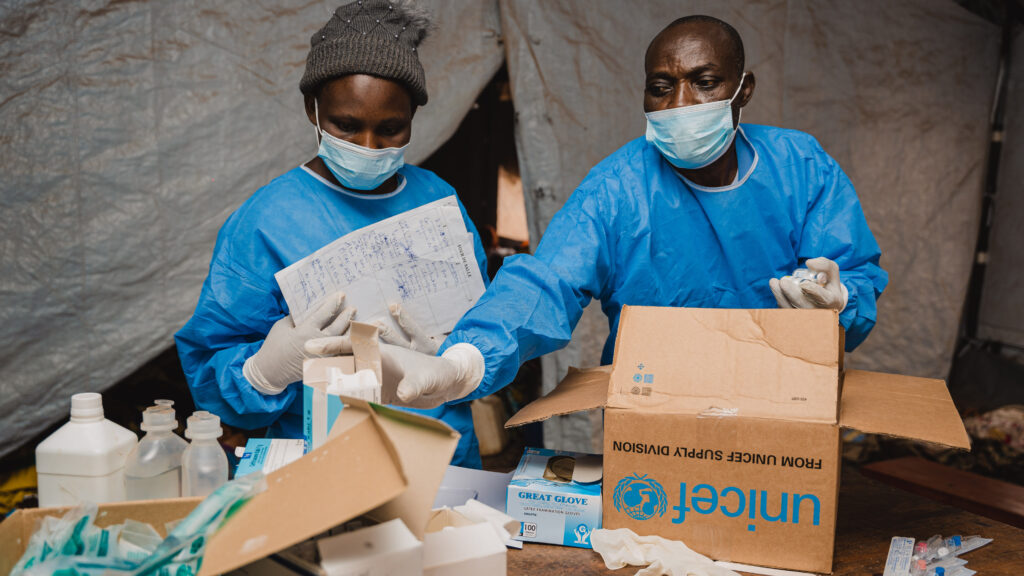There is a pervasive myth that the Democratic Republic of the Congo and other countries in Africa affected by the current mpox outbreak lack capacity for the many elements that are needed for effective outbreak response.
That is not true; they have significant experience and capacities in field epidemiology, testing, sequencing, case finding and contact tracing, clinical care, infection prevention control, risk communication, community engagement, vaccination delivery, scientific research, emergency operations and more. These have been built during outbreaks of Ebola, measles, polio, and during the Covid-19 pandemic.
advertisement
What is challenging is sustaining these capacities, addressing conflict and insecurity and the chronic inadequate access to lifesaving materials — affordable, available, reliable diagnostics, therapeutics, vaccines and other health products.
A swift, coordinated, and equitable response is critical to controlling the outbreak and preventing future resurgences. Global neglect led us to this situation. A global response, based on equity and solidarity, is the only thing that can get us out of it.
The initial work to control transmission of mpox in the DRC and neighboring countries was boosted recently with the Sept. 5 arrival of the first mpox vaccines in the Democratic Republic of the Congo. This is welcome news, but they won’t end the mpox outbreaks on their own.
advertisement
To begin with, there are currently insufficient vaccines for everyone in the affected areas, or even everyone who may be at risk. Vaccination must be prioritized for those at highest risk — contacts of those infected, including health workers, in the most affected areas.
The World Health Organization, where I work with many to prevent and combat epidemics, is collaborating closely with a coalition of other partners — including UNICEF, Gavi, CEPI, Africa CDC, the European Commission’s Health Emergency Preparedness and Response Authority (HERA), and PAHO Revolving Fund — to support the affected countries to coordinate the supply, demand, and distribution of vaccines through an access and allocation mechanism.
WHO Director-General Tedros Adhanom Ghebreyesus has also triggered the process for Emergency Use Listing (EUL) of mpox vaccines, which provides WHO’s stamp of approval for safety and efficacy in countries whose own national regulators have not yet approved the vaccines. The two major providers of vaccines for low-income countries, Gavi and UNICEF, also require EUL to procure vaccines. On Friday, WHO granted prequalification status to an mpox vaccine, Imvanex, for the first time.
However, EUL is not a barrier to deploying vaccines in the DRC, where they received national regulatory approval in June. The bigger barrier has been accessing them.
During the global mpox outbreak that began in 2022, many high-income countries established significant stockpiles of vaccines. The vaccines that arrived in DRC recently were donated by HERA. More donations have been pledged and will be arriving in the coming days and weeks.
Again, this is welcome news, as vaccines are useless on shelves or in warehouses. They need to get to people who need them, right now.
There is no question that vaccines could and should have arrived and been deployed sooner. But the affected countries and communities are far from defenseless. There are many things that they have been doing to prevent infections and stop transmission, and which will continue alongside the rollout of vaccines.
advertisement
The actions needed to stop this outbreak within the next six months are outlined in WHO’s Global Strategic Preparedness and Response Plan and the continental plan developed jointly by WHO and the Africa CDC. Vaccination is one important component of those plans, but only one. As in any outbreak, no single tool can be relied upon entirely.
Critically, stronger epidemiological surveillance and field investigations are absolutely essential to tailor prevention and control efforts. This goes beyond counting cases; it requires efforts to improve our understanding of the transmission dynamics and clinical outcomes of the various subclades. How are these subclades moving through populations? What are the key factors driving their spread? What are the factors explaining the differences in case fatality rates? The answers to these questions will enable more targeted public health interventions.
Communication strategies that are clear, factual, and sensitive, deft about conveying uncertainties and unknowns, listening to what people want to know and not only what we think they should know, and countering both deliberate and inadvertent falsehoods are essential. The mpox outbreaks, as with others, seem to have already created a thriving disinformation industry; companies whose platforms host accounts that spread falsehoods have a responsibility to ensure lives are not endangered in the name of free speech. Public health messaging needs to reduce stigma, promote safe practices, and encourage those at risk to seek testing and vaccination.
For this collaborative response to be effective, countries must commit to share data quickly and transparently, to support and engage in coordinated emergency responses, to share available resources, to reduce conflicts and ensure safe access for health workers in the region, and to ensure political commitment to the response at the highest levels.
The tragedy is that although mpox has been endemic in Africa for decades, it attracted little attention outside Africa from donors, researchers, or media before the global outbreak that began in 2022. As long as mpox continues to circulate in any part of the world, the risk of resurgence remains everywhere.
advertisement
Maria D. Van Kerkhove, Ph.D., is the interim director of the Department of Epidemic and Pandemic Threat Management, Health Emergencies Programme, World Health Organization.

